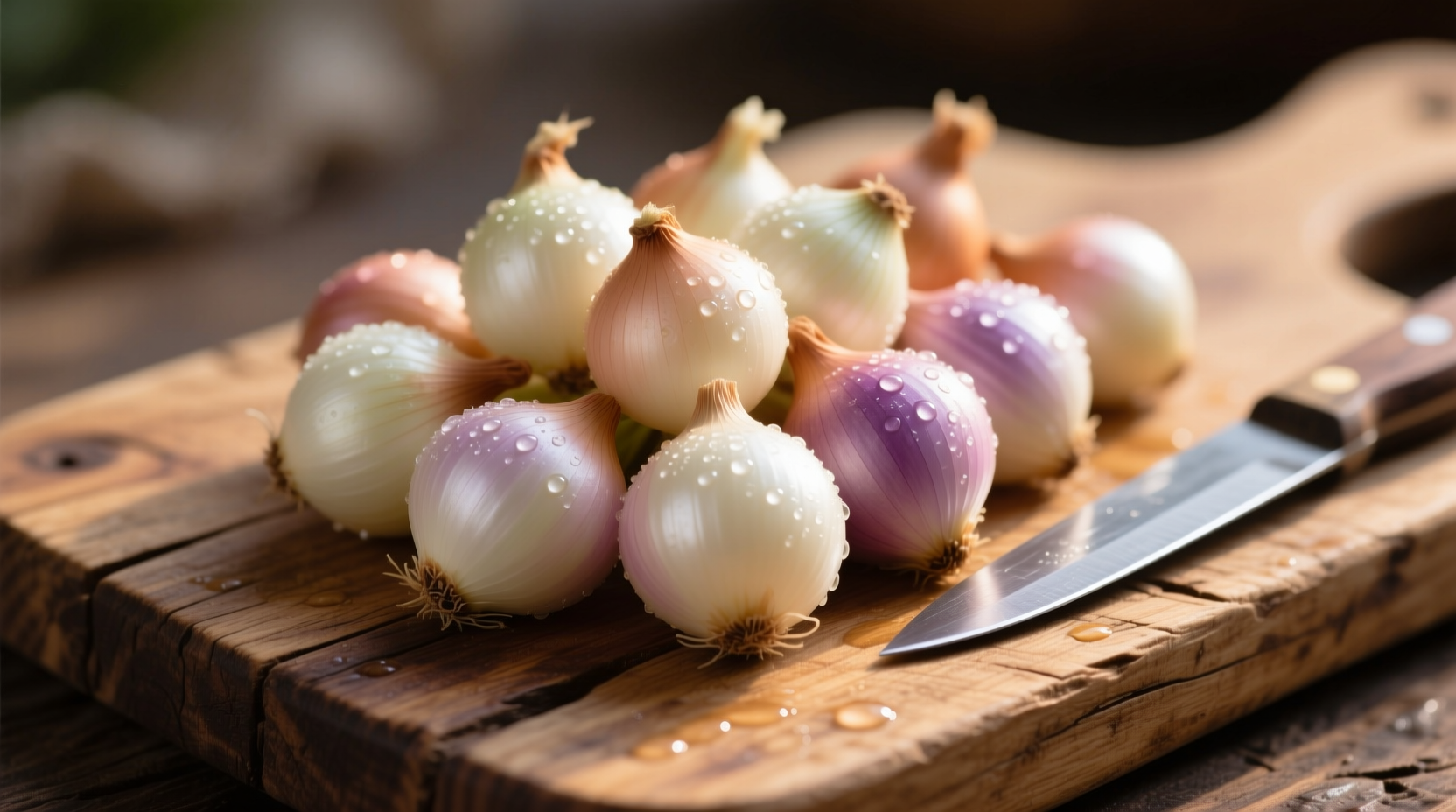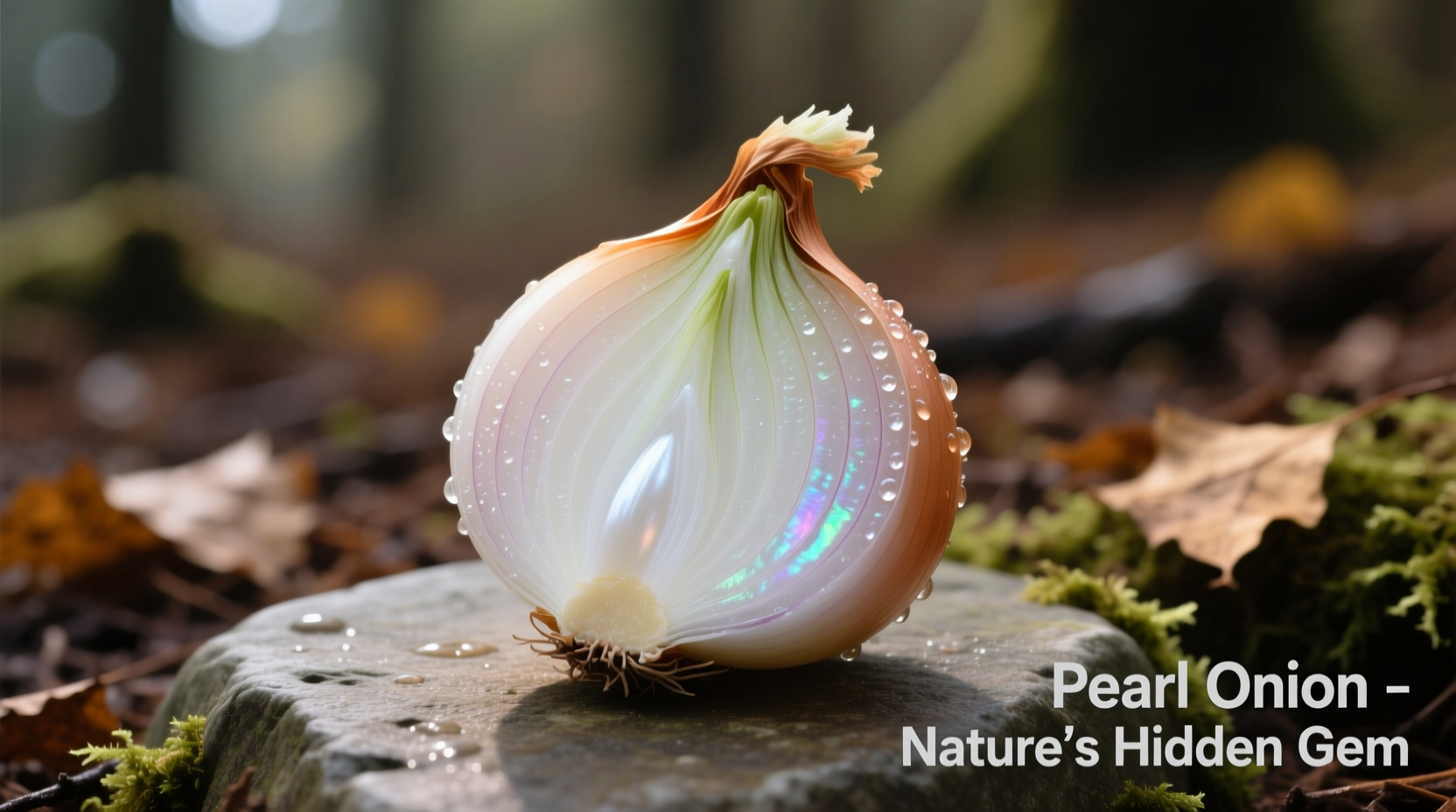What Exactly Are Pearl Onions?
Pearl onions (Allium ampeloprasum var. sectivum) are immature bulbs harvested before reaching full size. These petite alliums grow in clusters similar to garlic and feature a delicate balance of sweetness with subtle pungency. Unlike their larger cousins, pearl onions contain less sulfur compounds, resulting in a milder taste that won't overpower delicate dishes.
Available year-round but peaking in spring and early summer, fresh pearl onions typically range from white to yellow varieties, with red pearl onions offering vibrant color for pickling. Their compact size (about 25-38mm in diameter) makes them perfect for single-bite applications where regular onions would overwhelm the dish.
Pearl Onions vs. Other Small Onion Varieties
| Onion Type | Size | Flavor Profile | Best Culinary Uses |
|---|---|---|---|
| Pearl onions | 1-1.5 inches | Mild, sweet, delicate | Roasting, pickling, stews, garnishes |
| Boiling onions | 1.5-2 inches | More pungent, less sweet | Stews, soups, braises |
| Cocktail onions | 1 inch or smaller | Very mild, often pickled | Cocktail garnishes, appetizers |
| Shallots | 1.5-2.5 inches | Subtle garlic notes, complex | Vinaigrettes, sauces, delicate sautés |
Smart Selection and Storage Techniques
When shopping for pearl onions, look for firm bulbs with dry, papery skins free from soft spots or mold. The best specimens feel heavy for their size with minimal root growth. Avoid any with green sprouts, which indicate age and potential bitterness.
For optimal storage, keep pearl onions in a cool, dark, well-ventilated space like a pantry or cellar. Properly stored, they'll maintain quality for 2-3 weeks. Never refrigerate whole pearl onions as moisture accelerates spoilage. If you've peeled them, store in an airtight container in the refrigerator for up to 5 days.
Mastering the Peel: Three Foolproof Methods
Peeling pearl onions doesn't need to be tedious. Professional chefs use these three time-tested techniques:
- Blanching Method: Score an "X" on the root end, boil for 60-90 seconds, then transfer to ice water. The skins slip off effortlessly.
- Baking Method: Roast at 400°F (200°C) for 20-25 minutes until skins blister. Cool slightly before peeling.
- Shaking Technique: Place blanched onions in a sealed container and shake vigorously to separate skins from bulbs.

Historical Journey of Pearl Onions in Cuisine
Pearl onions have evolved from humble peasant food to gourmet ingredient through distinct culinary phases. Originally cultivated in the Mediterranean region, they appeared in medieval European cookbooks as "small onions" used in pottages. By the 17th century, French chefs began featuring them in refined dishes, recognizing their presentation value.
The 19th century saw pearl onions become essential in classic French cuisine, particularly in dishes like coq au vin and beef bourguignon. Modern culinary trends have expanded their use beyond traditional applications, with contemporary chefs pickling them for cocktails, caramelizing them for charcuterie boards, and incorporating them into innovative vegetarian dishes.
Top Culinary Applications for Pearl Onions
Chefs value pearl onions for their ability to maintain structure while absorbing flavors. Here's how to maximize their potential:
Classic Preparations
- Glazed pearl onions: Simmer in butter, sugar, and broth until tender and glossy
- Pickled pearl onions: Preserve in vinegar brine with spices for cocktail garnishes
- Roasted pearl onions: Toss with olive oil and herbs for 25 minutes at 400°F
When Pearl Onions Shine (and When to Avoid)
Understanding context boundaries helps you use pearl onions effectively:
- Perfect for: Dishes requiring intact, visually appealing onions; recipes where mild onion flavor is desired without overpowering other ingredients; elegant presentations
- Avoid when: You need strong onion flavor; creating purees or soups where texture doesn't matter; working with extremely tight budgets (they're more expensive per ounce than regular onions)
Nutritional Benefits Worth Noting
Despite their small size, pearl onions pack significant nutritional value. A 100g serving provides:
- 42 calories with 9.3g carbohydrates
- 3.4g dietary fiber (14% of daily value)
- Rich in vitamin C and B vitamins
- Contains quercetin, a powerful antioxidant
- Natural prebiotic properties supporting gut health
Unlike larger onions, pearl onions maintain more nutrients during cooking due to their smaller surface area-to-volume ratio, making them particularly valuable in slow-cooked dishes where nutrients might otherwise leach out.
Three Signature Dishes Featuring Pearl Onions
These professional chef-tested recipes showcase pearl onions at their best:
- Traditional Beef Bourguignon: Add 20-25 peeled pearl onions during the last 30 minutes of braising for perfect texture and flavor absorption.
- Holiday Glazed Pearl Onions: Simmer 1 cup peeled onions in 1/4 cup butter, 2 tbsp brown sugar, and 1/2 cup beef broth until tender and glossy (about 20 minutes).
- Cocktail Pickled Onions: Pack 1 pint jar with 15-20 peeled onions, 1 tsp coriander seeds, 1/2 tsp red pepper flakes, then cover with equal parts vinegar and water plus 1 tbsp salt.
Frequently Asked Questions
Here are answers to the most common questions about pearl onions:











 浙公网安备
33010002000092号
浙公网安备
33010002000092号 浙B2-20120091-4
浙B2-20120091-4